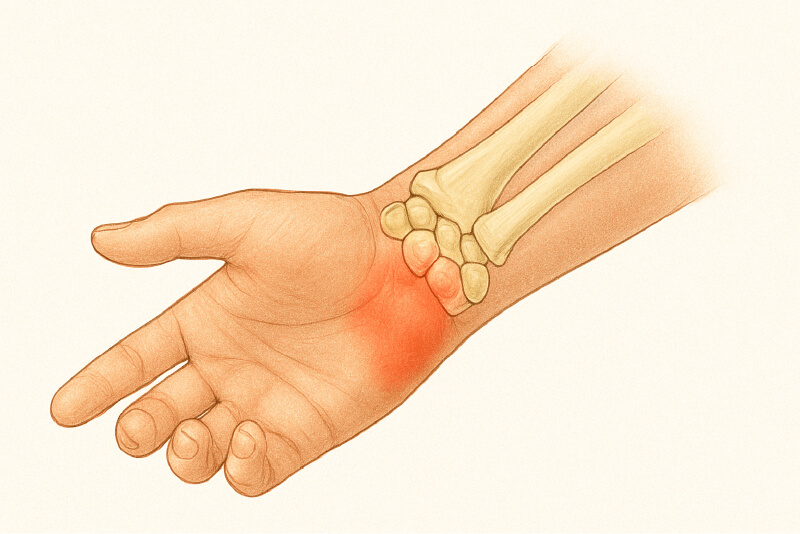Wrist Disorders
Wrist disorders include fractures, instability, ganglion cysts, and TFCC injuries, often caused by trauma or repetitive stress, impacting wrist motion and load-bearing.
Dr. Vamsi combines precise diagnostics with advanced surgical and non-surgical treatments tailored to each patient’s needs. His patient-centric approach ensures optimal recovery and restoration of hand function with minimal downtime.

Dr. Vamsi’s Three-Step Approach to Treating Wrist Disorders

- Precise Diagnosis
Dr. Vamsi uses clinical evaluation and imaging to identify the exact cause and severity of the disorder.
- Targeted Treatment
He begins with non-surgical options like splints, therapy, or injections, and opts for minimally invasive surgery if needed.
- Focused Recovery
A structured rehab plan ensures patients regain hand strength, flexibility, and daily function effectively.
Conditions Treated
A common wrist fracture near the end of the forearm bone, often caused by falls, requiring proper alignment and stabilization for recovery.
Breaks in the small scaphoid bone of the wrist, typically due to falls on an outstretched hand; often hard to detect and may need surgical fixation.
Abnormal movement between the small wrist bones (carpals), leading to pain, weakness, and potential long-term arthritis if untreated.
Noncancerous, fluid-filled lumps commonly forming on the wrist joints or tendons, sometimes causing pain or limiting movement.
Damage to the cartilage structure on the ulnar side of the wrist, leading to pain, clicking, or instability, especially during rotation.
A condition where the ECU tendon slips out of place at the wrist, causing pain, snapping, and weakness during hand movements.
